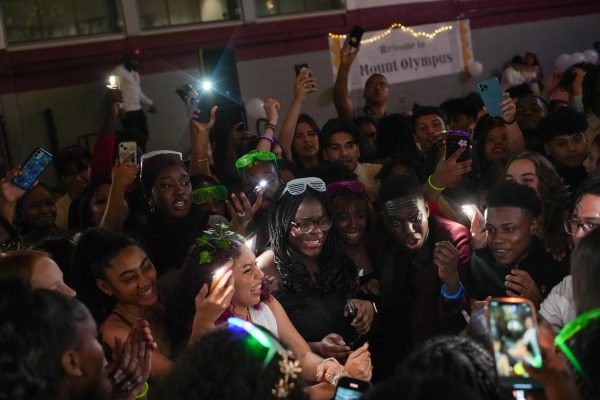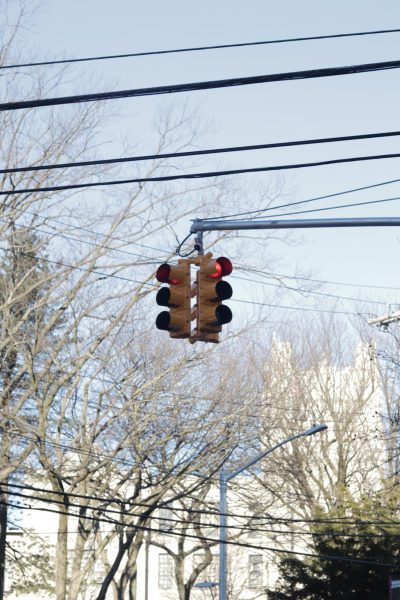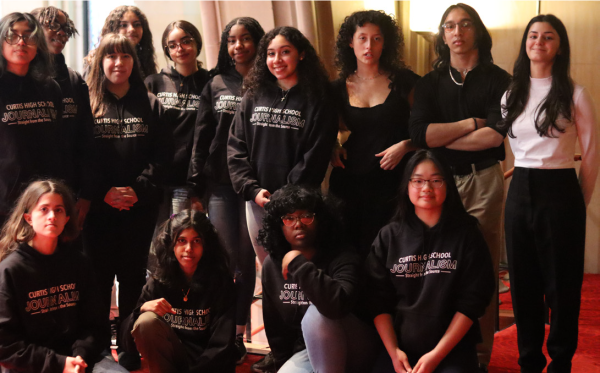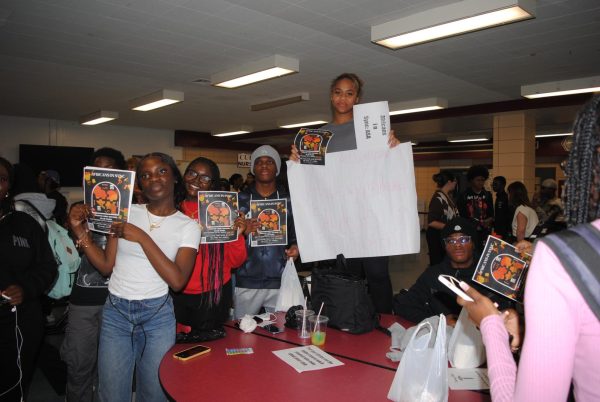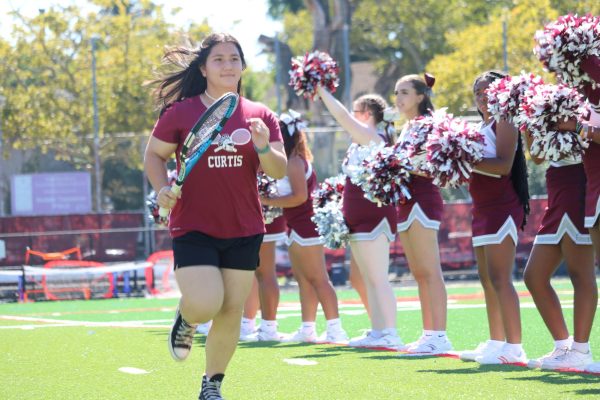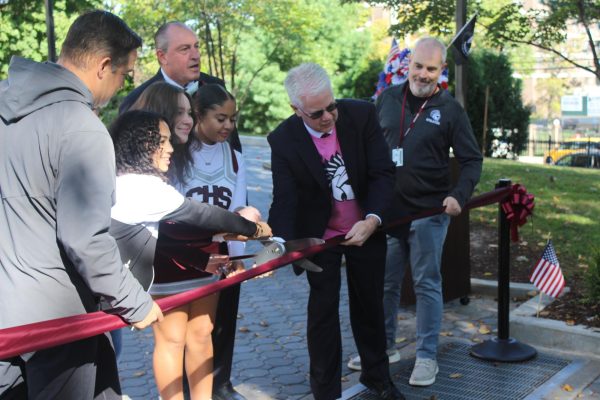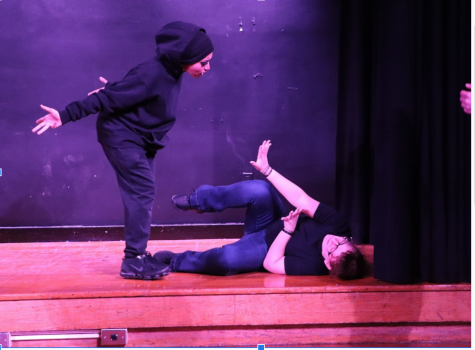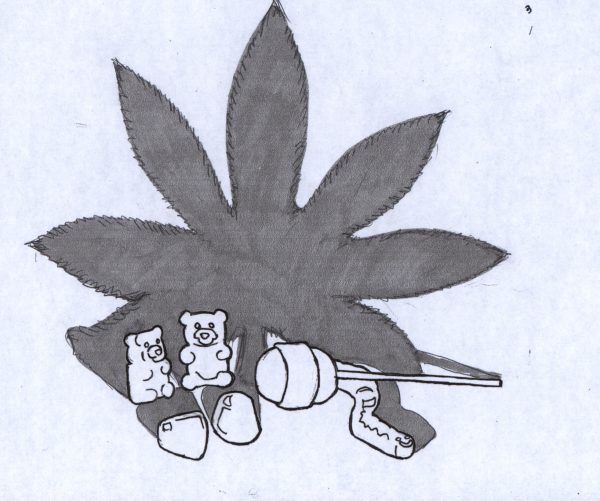Truancy patrols disregard students’ needs
Students voice numerous complaints about truancy patrols.
The Department of Education school safety division has four squads of school safety agents that patrol the four Staten Island police precincts in a van and pick up truant students. These patrols, specifically the one that roams the streets of the North Shore, do not seem to have a consistent protocol in dealing with students.
After interviewing over 15 students who have been stopped and or picked up by the truancy patrol a pattern begins to emerge. One of disrespect towards students and disregard for their education and safety .
One of the major complaints about the truancy patrols from students was that they were picked up on their way to school. Most of the interactions with the mobile patrols were within a half a mile of Curtis. Since Curtis is on a split schedule some students do not start until period three and sometimes that third period is a lunch. Freshman, Kurria Grady, got picked up by truancy while she was on her way to school at about 9 o’clock in the morning. She begins classes at 9:52. On her program her lunch is scheduled for third period. Grady tried to explain that her classes did not begin until fourth period, even showing the agents her school program. The truancy patrol did not take this documentation into consideration and transported Grady to the Port Richmond High School Truancy Center and called her mother. By the time Grady returned to Curtis she had missed three of her classes. Of the students interviewed only one was not in picked up in close proximity of Curtis.
Mr. Hepworth, the parent coordinator, of Curtis High School shared the information he had about truancy. ¨The truancy program used to be run from the Staten Island District Attorneys Office; it was called TRACKS. They lost the funds. When the DA’s Office ran the program, they would run the data and I would get the statistics. The police department runs truancy now. They provide no information. My observation is the van pulls up in front of the school (after third period) and bring students to the truancy center, or the patrol would come in the afternoon (lunch time). These kids are not truant.¨ Mr.Hepworth feels it is more difficult to find the students that are actually truant, not students who are on their way to school or left school to get lunch with the intention of coming back. ¨They harass the students who aren’t actually truant,¨ said Hepworth.
Alana Caruso, the assistant principal of guidance at Curtis High School said it doesn’t seem like truancy officers pick up the students who are actually cutting school. “In most circumstances, they pick up kids who are on their way to school. Why find kids who are on their way to school? They should look for kids by the ferry, who are actually cutting school,” said Caruso. Caruso also said that many students have complained to her how the officers treat them. They are reported to be rude and disrespectful.
Like Hepworth, Caruso feels that communication is weak between the patrols and the schools. “Unless a student came and told me they were picked up or the deans’ office tells me I do not receive any information on the students that are caught by truancy,” said Caruso.
Jose Burbano, assistant principal of security at Curtis High School concurs with Caruso, “since the center moved from McKee, we have not been notified about students that are picked up by the patrols.” Although the Curtis High School administration does not receive notification of truant students the contact interviewed at the Port Richmond Truancy Center stated that each school is notified of the truant students processed at their center.
Picked up twice by truancy Carlos Simon has an interesting story to tell. ¨I mostly got picked up by truancy during my freshman year. I got picked up once during sophomore year. The officers always made the students feel guilty even if they weren’t even cutting school. They were rough and every chance they got, they tried to intimidate me. One time, they pulled me out of a car and all my weight fell on one leg and it hurt. I tried to tell them that I had no arms, they did not believe me and continued to be rough with me. The officer who hurt my leg, came back to apologize to me, but it didn’t seem like he was really sorry.¨ Simon explained that he was angry about what had happened and how the officers treated him. It was a Wednesday and he didn’t need to be into school until 9:20 so he wasn’t even late.
Ubong Ekpo was put in an overcrowded van after being picked up near the ferry. He was not instructed to put a seat belt on, but would not have been able to. “ We were sitting so close together, we all could not have put belts on anyway, there were not enough belts,”said Ekpo. Not one of the fifteen students interviewed for this article were asked to put on a seat belt in the van that transported them to Port Richmond High School.
There is a truancy patrol for each of the three precincts. All patrols bring the students to Port Richmond High School. According to the administration at the truancy center at Port Richmond the patrols do not pick up students after 12:30. At the center the students must leave their belongings with an officer and wait to be processed. The first task of the center is to get in touch with the parent. If the student is under 15 they must be picked up by a parent. If the student is over 15, and it is his or her first time being stopped by truancy, the parents can give permission to have their child released. If it is the second offense, parents are required to pick their child up, if the student is almost 18 they don’t need the parents’ consent to be released. If the child is special needs, they guardian must pick them up. The students who are picked up by truancy are not only public school students, the task force also picks up students that attend private school.
Trying to contact the actual patrol or someone directly involved with them proved difficult. Two attempts to contact the Truancy Task Force by email went unanswered for two weeks. When contacted via phone, The New York City Police Department told the reporter that all press questions will only be answered via email. These emails also went unanswered.
According to Dictionary.com truancy is the action of staying away from school without good reason. The distinction between occasional cutting, lateness and actual truancy is lost on the truancy patrol. Three out of four students who are chronically absent, never graduate from high school. Nearly 80% of children in the New York Juvenile Delinquent system have been chronically absent in the period of time before their arrest.
There are many causes for truancy; homelessness, health issues, abuse, neglect, caretaking responsibilities, bullying, and transportation challenges. These patrols and the truancy center do not address the underlying issues that cause truancy.

